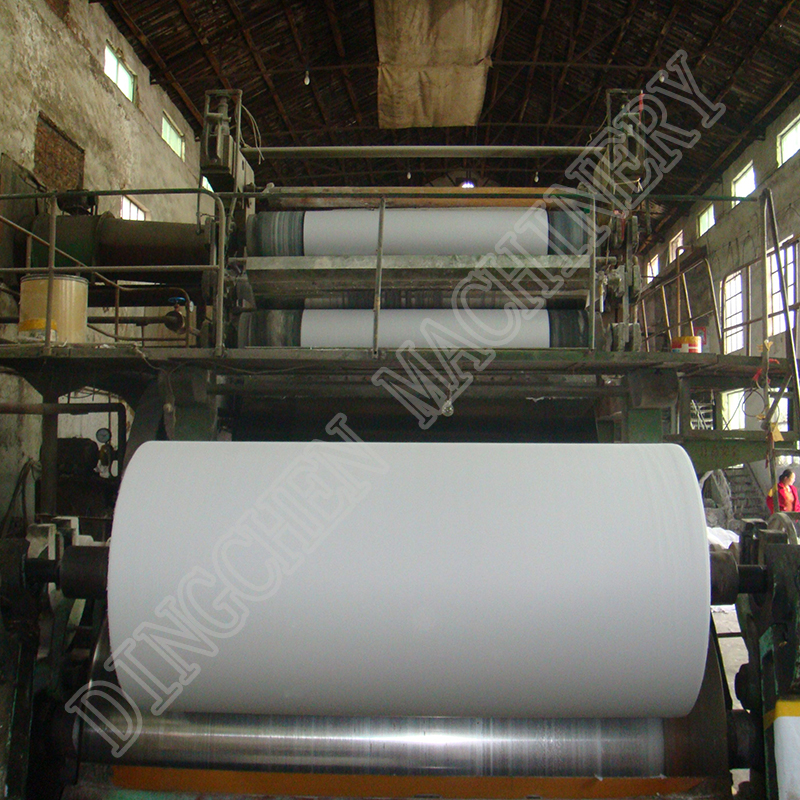The working principle of a cultural paper machine mainly includes the following steps:
Pulp preparation: Processing raw materials such as wood pulp, bamboo pulp, cotton and linen fibers through chemical or mechanical methods to produce pulp that meets papermaking requirements.
Fiber dehydration: The modulated raw materials enter the paper machine for dehydration treatment, forming a uniform pulp film on the web of fibers.
Paper sheet forming: By controlling pressure and temperature, the pulp film is formed into paper sheets with a certain thickness and humidity on the paper machine.
Squeezing and dehydration: After the wet paper leaves the papermaking net, it will enter the pressing section. Gradually apply pressure to the paper sheet through the gaps between multiple sets of rollers to further remove moisture.
Drying and shaping: After pressing, the moisture content of the paper sheet is still high, and it needs to be dried by hot air drying or contact drying in a dryer to further reduce the moisture content in the paper sheet to the target value and stabilize the structure of the paper sheet.
Surface treatment: Coating, calendering, and other surface treatments are applied to paper according to different application scenarios to improve its surface characteristics, such as smoothness, glossiness, and water resistance.
Cutting and packaging: According to customer needs, cut the entire roll of paper into finished products of different specifications and package them.
Post time: Dec-20-2024


